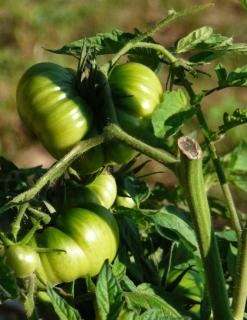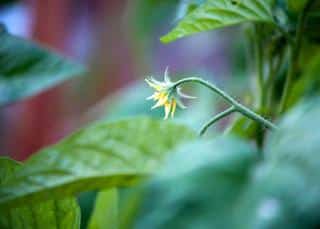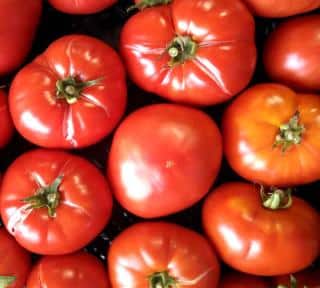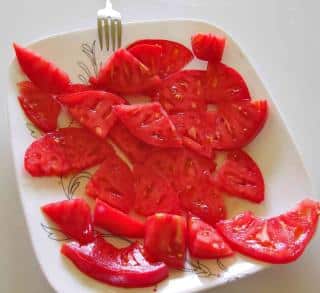

The Brandywine tomato has a fragrant taste, and many appreciate it for its dense, juicy flesh.
‘Brandywine’ tomato key facts:
Botanical name – Solanum lycopersicum
Family – Solanaceae
Type – fruit vegetable
Height – up to 2 m
Exposure – full sun
Soil – cool, healthy, rich, loose
Sowing – Spring
Planting – May
Harvest July to September
The Brandywine tomato is a “beefsteak” type tomato variety. It produces large pink-red fruit, slightly ribbed, each of which weighs 5 to 7 ounces (150 to 200 grams). This very tasty tomato is a favorite of many who love its thick, heavy flesh that’s very juicy. It’s definitely among the most tasty tomatoes ever.
With a good-to-high productivity, the Brandywine is a tomato variety that can reach 6 to 7 feet tall (2 m) for just under 2 feet across (50cm). What also makes this plant interesting is that its leaves aren’t as finely dissected as those of other tomato plants. This means they’ve got leaves that aren’t cut as deeply as usual, making them look like those of their relative, the potato.
Start your Brandywine tomato seeds off on a warm bed at 68°F or 20°C anytime in March or April. Sow the Brandywine tomato seeds about a quarter-inch deep (5 mm) in special sowing soil mix.
Transplant your young Brandywine tomato saplings to the vegetable patch towards the middle of May. Date may change depending on your area, what matters is that the last frost date is behind you. At this stage, they’re about 5 to 6 inches tall (12 to 15 cm). Planting distance: 20 to 24 inches (50 to 60 cm)
 Set your plants up in a sunny spot, but also not a spot that gets scorching hot in summer.
Set your plants up in a sunny spot, but also not a spot that gets scorching hot in summer.The Brandywine tomato is a non-determinate growing variety. It requires staking right from the start. Not hardy at all, it’s cared for as an annual in non-scorching sunny spots with rich, light and cool soil. 
As is the case for most tomato varieties, the Brandywine is vulnerable to both downy mildew and powdery mildew. If the soil lacks calcium, you might also fall victim to tomato blossom end rot. To solve this problem, prepare a batch of comfrey tea and spray it on the ground.

If you tend to consume them quicker than that, you can also simply spread them out on a tray in the open air. The Brandywine tomato is perfect for keeping in jars, but you’ve got to cook it adequately.

Thanks to its dense flesh, it’s also possible to grill thick slices on the barbecue, sprinkled over with herbs.